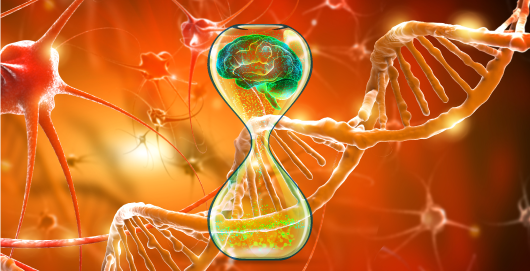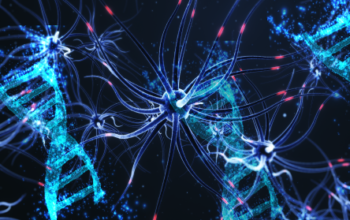
Date: 15th April 2021
Worldwide, ~50 million people are living with dementia, and Alzheimer’s disease (AD) is the most common – contributing to 60-70% of cases. With no cure or ways to stop or slow its progression, current medications merely treat the symptoms. Over the past decade, the immune system’s connection to Alzheimer’s progression has become clearer however, the role of B cells has rarely been explored, and at most is considered to be beneficial. Now, researchers show evidence that AD progression requires B cells, which cause deposits of immunoglobulins around plaques. Therapeutic depletion of circulating B cells at the onset of the disease eliminates immunoglobin deposits in the brain and blocks AD manifestation.
AD is associated with impaired clearance of toxic proteins such as beta-amyloid peptides (Aβ), which aggregate in the brain parenchyma, and result from aberrantly cleaved amyloid precursor protein (APP). The protein clumps together forming plaques between the neurons and disrupts cell function. Although B cells have been shown to produce potentially beneficial Aβ plaque-reducing immunoglobulins and express AD-ameliorating cytokines, B cells are a heterogenous cell population, and their role in aging-associated diseases remains largely unknown.
Now, researchers led by Arya Biragyn from the National Institute on Aging, US, in collaboration with scientists from Israel and Russia, provide counterintuitive evidence that AD progression requires B cells. Loss of B cells alone is sufficient to reduce Aβ plaque burden, disease-associated microglia and reverses behavioural and memory deficits in mice. Therapeutic depletion of B cells at the onset of AD also retards progression.
To start the team wanted to assess the involvement of B cells in AD using mouse models for early-onset AD (EOAD). They observed a significant upregulation in the frequency and numbers of B cells in the circulation and secondary lymphoid organs, and a higher amount of activated B cells that express IFNγ, IL6, IL10, and TGFβ than in the control animals.
To confirm a role for B cells in AD, they generated a B-cell-deficient line of EOAD mice. Here, they found the B-cell deficiency significantly improved learning deficiencies in the EOAD animals. As the memory impairments in EOAD are caused by the accumulation of Aβ plaques and hippocampal microgliosis, the team investigated these aspects further. Indeed, B-cell deficiency reduced the Aβ plaque burden and microglial activation in the hippocampus of AD mice, supporting a role for B cells in AD.
Next the team wanted to ask whether the progression of EOAD could be halted or slowed by therapeutic inactivation or depletion of B cells at the disease onset. They used an antibody (anti-CD20/B220) which depleted B cells in the circulation at the point of disease onset. They found in two models of AD a significant reduction of Aβ plaques, and the reversal of the decrease in TGFβ+ and IFNγ+ microglia to near wild type levels. Together this suggested that depletion of B cells can retard progression of AD even if applied at the onset of the disease.
Finally, the team demonstrated that B cells promote AD by infiltrating the brain parenchyma. Here, control age-matched WT mouse brains showed very few infiltrating B cells however, in AD brains there was a significant increase of B cells in the parenchyma which were then completely lost in the B cell-depleted animals. As the therapeutic antibody cannot cross into the brain this implied the B cells were derived from the circulation. This was concomitant with immunoglobulins (IgG) levels found in the brain, where high numbers of IgG foci in the brains of the AD mice, were returned to a near absent level upon B cell loss, as was seen in wild type brains.
Conclusions and future applications
The team here have demonstrated that the genetic loss of B cells alone or their transient depletion at the onset of AD improves the disease symptoms of three different mouse models of AD. Taken together, this data warrants a deeper investigation into B cells and AD pathology, and suggests that targeting B cells could be a potential new strategy for controlling AD progression.
B cells depletion was able to reduce Aβ plaques, disease-associated microglia, whilst restoring healthy (TGFβ+) microglia, and improved behavioural impairments of the AD mice.
There is a great unmet clinical need for therapies and medication that address disease progression especially for neurodegenerative diseases. Inroads are being made however, such as the launch of Neuroglee Therapeutics who are attacking AD through personalised AI-powered digital therapeutics. Recent work using artificial intelligence has identified maternal autobodies as a diagnostic biomarkers of autism, as several of the autoantibodies studied have also been proposed as biomarkers for Alzheimer’s disease this may translate as an early risk indicator, prior to the appearance of disease symptoms. Scientists are also developing nanoparticle platforms to deliver inhibitory molecules to ablate the expression of key neurodegenerative players. This is in response to traumatic brain injury, but as these types of injuries are associated with AD, and may act as an effective pre-emptive tool.
However, understanding the biology of the disease is crucial. This work and others, such as the involvement of the AD genetic risk factor - apolipoprotein E gene (APOE) - which disrupts lipid homeostasis, will open new avenues for AD research, giving us new targets for therapeutic approaches, and accelerating novel strategies to fight these devastating diseases.
Kim, K., X. Wang, E. Ragonnaud, M. Bodogai, T. Illouz, M. DeLuca, R. A. McDevitt, F. Gusev, E. Okun, E. Rogaev and A. Biragyn (2021). “Therapeutic B-cell depletion reverses progression of Alzheimer’s disease.” Nature Communications 12(1): 2185.
https://doi.org/10.1038/s41467-021-22479-4
